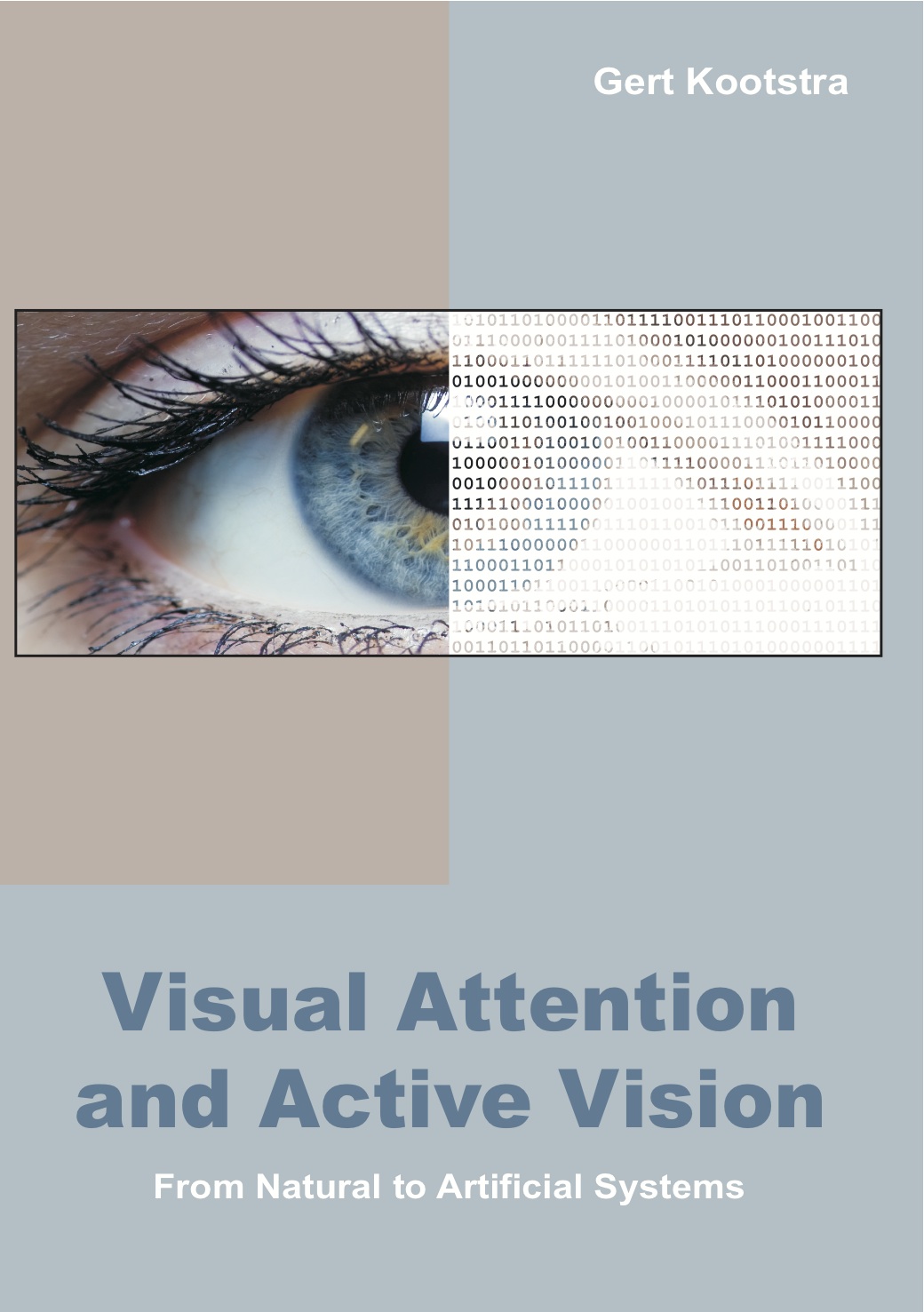Visual Attention and Active Vision
In Natural and Artificial Systems
During my Ph.D. research, I studied visual attention and active vision
in natural and artificial systems.
My dissertation:
- Kootstra, G. (2010) Visual Attention and Active Vision: From natural to artificial systems. Ph.D. thesis University of Groningen, The Netherlands. ISBN: 978-90-367-4367-9, pdf
Predicting human eye fixations
We conducted eye-tracking experiments with human participants to study the image features that attract overt visual attention. Based on the observation that human gaze if often focussed on symmetrical structures in the image, we developed saliency models based on symmetry to predict human eye fixations. The results show that human eye-fixation patterns correlate better with symmetry-saliency maps than with contrast-saliency maps produced with the model of Itti, Niebur, and Koch.Read more.
Using symmetry to select landmarks for visual SLAM
Inspired by the fact that humans pay attention to symmetrical parts of the visual field, we developed models to guide the attention of a mobile robot in a Simultaneous Localization and Mapping context. By calculating the local symmetry in the image, the robot selects visual landmarks that can be used to represent the environment. The results of the robotic experiments show that the use of symmetry results in more stable and robust selection of landmarks than using the Scale-Invariant Feature Transform (SIFT), thereby improving the SLAM performance.Read more.
Active vision
"...perceiving is an act, not a response, an act of attention, not a triggered impression, an achievement not a reflex." (James J. Gibson 1979)Part of my work is based on the fact that perception in natural systems is an active, not a passive, process. By letting a robot actively explore objects, it can get more information, solve segmentation tasks and perceptual ambiguities. We showed that recognition of objects greatly improves when an active approach to vision is used.
Read more.
Tackling the Premature Convergence Problem in Monte-Carlo Localization
In Monte-Carlo localization, particle filters are used to estimate the position of a robot based on its sensor readings. Although used by many researchers to solve localization and SLAM problems, the particle filter suffers from premature convergence. This can cause the system to end up in sub-optimal solutions, especially in ambiguous environments. To counter the problem, we applied niching methods to preserve diversity in the particle population.Read more.
